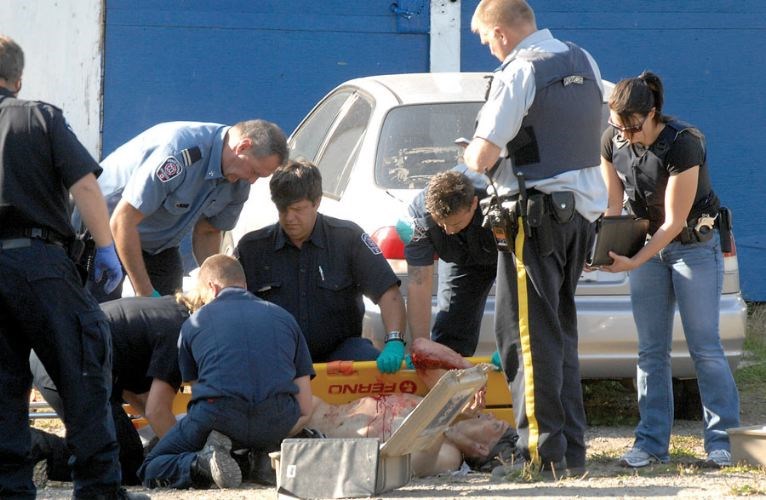The patterns of blood found at the scene show that while Bradley Douglas Barr may have initially acted in self defence, he ended up intending to leave an adversary suffering a slow and painful death, a Crown prosecutor argued during closing submissions Friday.
Barr, 35, is accused of attempted murder in the Sept. 20, 2012 shooting of Craig Frederick Lyver, 42, on a 2800-block Northwood Pulp Mill Road property.
In a taped conversation with a police agent and then in a subsequent interview with police, Barr indicated he was acting in self defence because Lyver was pointing a shotgun at him.
But while that may have been true at the outset when Barr shot Lyver in the arm leaving him unable to hold a gun, prosecutor Joseph Temple argued he followed up with shots to his hip and knee that left him lying on the ground, "hopeless and helpless" with life-threatening wounds.
"Even if Mr. Barr was acting in self defence when he fired his first shot, he has no excuse for firing the second shot and then again a third shot," Temple said.
Barr then left the scene and there is no evidence he called for help on Lyver's behalf, Temple said.
Barr meant to leave Lyver to "die slowly and in pain" and that would have occurred, Temple said, if not for a Samaritan who heard his screams as he was driving by and came to his aid even though the "person who shot him could be anywhere."
Barr claimed he first shot Lyver in the knee, dropping him to the ground, before shooting him in the hip, then the arm before Lyver finally let go of the gun. "Freaked out," Barr said he then picked up Lyver's gun and took off to bury both weapons in another spot.
But Temple said the blood spatter on a garage door combined with the smears of blood on a car parked in the driveway suggest the version of events Lyver gave when he testified Wednesday was more accurate.
In part, Lyver had told the court he was sitting on a pile of tires next to the garage having a smoke when Barr drove up, got out of his truck holding a shotgun at his side. As he stood up, Lyver said Barr suddenly aimed it at him and started firing.
Temple said text messages between the two showed that they had reached the point of detesting each other by as early as two weeks before the confrontation.
Barr had been living on the property where he was responsible for keeping an eye on a marijuana grow operation, but the Lyver was complaining he was not doing any of the work. Barr, conversely, complained Lyver was harassing him.
Defence lawyer Keith Aartsen countered the blood patterns found at the scene are open to more than one interpretation and recollected expert testimony that suggested Lyver was hit first in the knee, then the hip and then the arm.
He also noted Barr's girlfriend, Katherine Barschel, who the court heard was also at the scene, was not called by the Crown to testify.
In rebuttal, Temple said Barschel asserted during a preliminary inquiry that she was not there and Barr had told the police agent he was confident she was not going incriminate him.
B.C. Supreme Court Justice Ron Tindale reserved decision to a future date.



